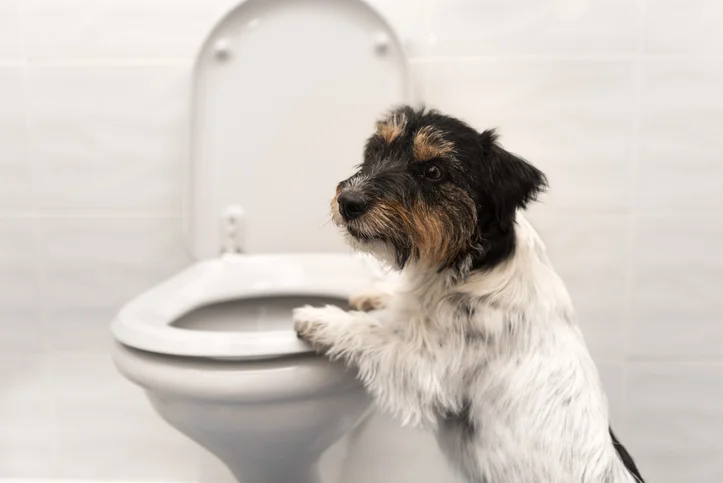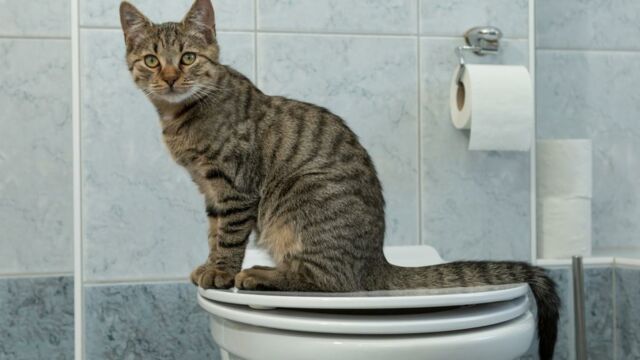When Flushing Animal Waste Down the Toilet Is Harmful
When Flushing Animal Waste Down the Toilet Is Harmful
Blog Article
We've stumbled on this great article relating to Can You Flush Dog and Cat Poo Down the Toilet? down the page on the web and believe it made sense to relate it with you here.

When it pertains to throwing away waste, particularly animal waste, lots of people commonly resort to the hassle-free alternative of flushing it down the toilet. Nonetheless, this apparently simple option can have serious consequences for the atmosphere and public health. In this post, we'll discover why flushing animal waste down the bathroom is a poor concept and supply different methods for appropriate disposal.
Intro
Correct waste disposal is critical for keeping environmental sustainability and public health. While it might appear harmless to purge animal waste down the toilet, it can cause numerous problems, both for the atmosphere and human well-being.
Threats of flushing pet waste
Ecological influence
Purging animal waste introduces unsafe microorganisms and virus right into waterways, which can negatively affect marine ecological communities. These microorganisms can infect water sources and injury aquatic life, interfering with fragile communities.
Public health problems
Pet waste includes hazardous germs such as E. coli and Salmonella, which can position severe health and wellness risks to people. Flushing pet waste down the bathroom can infect water products, resulting in the spread of conditions and infections.
Alternatives to flushing
As opposed to flushing animal waste down the commode, there are several alternate disposal techniques that are more eco-friendly and hygienic.
Composting
Composting pet waste is an environment-friendly way to throw away it. By composting, raw material is broken down right into nutrient-rich dirt, which can be utilized to fertilize yards and plants.
Garbage dump disposal
Throwing away pet waste in a landfill is one more option. While not as environmentally friendly as composting, it is a much safer option to flushing, as it prevents the contamination of water sources.
Animal waste disposal systems
There are specific animal waste disposal systems available that securely and hygienically get rid of animal waste. These systems typically utilize enzymes to break down waste and remove odors.
Steps to proper animal garbage disposal
To make certain proper disposal of animal waste, follow these steps:
Scooping and getting waste
On a regular basis scoop and bag animal waste utilizing eco-friendly bags. This protects against waste from contaminating the atmosphere.
Making use of designated waste bins
Dispose of bagged animal waste in assigned waste bins, such as compost bins or garbage dump containers. Avoid flushing it down the bathroom at all prices.
Cleaning up can and pet dog locations regularly
Routinely clean litter boxes and family pet areas to stop the build-up of waste and microorganisms. Usage pet-safe cleaning products to maintain hygiene.
Benefits of correct disposal approaches
Taking on proper disposal more info techniques for pet waste provides a number of benefits:
Reduced environmental pollution
Correct disposal methods lower the danger of environmental pollution, securing rivers and environments from contamination
Reduced threat of water contamination.
By avoiding flushing pet waste down the commode, the risk of water contamination is significantly lowered, protecting public health.
Boosted hygiene and hygiene
Correct disposal approaches advertise far better cleanliness and hygiene, developing a more secure setting for both human beings and pets.
Final thought
To conclude, purging pet waste down the commode is harmful to the environment and public health. By embracing different disposal techniques and adhering to appropriate waste monitoring techniques, we can reduce the unfavorable effect of pet waste and add to a cleaner, much healthier world.
What To Do With Dog Poo – The Do's And Don'ts Of Disposing Of Faeces
Dog poo bins
Some councils provide dedicated dog waste bins in popular dog-walking areas that can take dog poo that has been bagged but you can legally dispose of dog waste in any public litter bin, as long as it is securely bagged. This also applies to your wheelie bin at home.
Do not flush
Water companies do not recommend flushing dog faeces down the toilet because certain parasites can survive the water processing treatment and are potentially harmful to humans. You should also never consider flushing dog poo that has been bagged down the toilet as the bags will not break down and instead create severe blockages in the sewage system.
In the woods
The Forestry Commission promotes a ‘stick and flick’ method for dealing with waste in the woods. This means finding a stick and using it to flick any poo from off the path so that it is out of the way of other walkers. You could also bury it as long as it is not in an area where there might be livestock.
Livestock
Parasites found in dog poo can be transmitted to livestock if they inadvertently eat infected faeces that has been left on grazing land. This could result in the death of sheep or abortion in cattle so you should always make sure you pick up your dog’s waste in fields where livestock could be present.

Routinely clean litter boxes and family pet areas to stop the build-up of waste and microorganisms. Usage pet-safe cleaning products to maintain hygiene.
Benefits of correct disposal approaches
Taking on proper disposal more info techniques for pet waste provides a number of benefits:
Reduced environmental pollution
Correct disposal methods lower the danger of environmental pollution, securing rivers and environments from contamination
Reduced threat of water contamination.
By avoiding flushing pet waste down the commode, the risk of water contamination is significantly lowered, protecting public health.
Boosted hygiene and hygiene
Correct disposal approaches advertise far better cleanliness and hygiene, developing a more secure setting for both human beings and pets.
Final thought
To conclude, purging pet waste down the commode is harmful to the environment and public health. By embracing different disposal techniques and adhering to appropriate waste monitoring techniques, we can reduce the unfavorable effect of pet waste and add to a cleaner, much healthier world.
What To Do With Dog Poo – The Do's And Don'ts Of Disposing Of Faeces
Dog poo bins
Some councils provide dedicated dog waste bins in popular dog-walking areas that can take dog poo that has been bagged but you can legally dispose of dog waste in any public litter bin, as long as it is securely bagged. This also applies to your wheelie bin at home.
Do not flush
Water companies do not recommend flushing dog faeces down the toilet because certain parasites can survive the water processing treatment and are potentially harmful to humans. You should also never consider flushing dog poo that has been bagged down the toilet as the bags will not break down and instead create severe blockages in the sewage system.
In the woods
The Forestry Commission promotes a ‘stick and flick’ method for dealing with waste in the woods. This means finding a stick and using it to flick any poo from off the path so that it is out of the way of other walkers. You could also bury it as long as it is not in an area where there might be livestock.
Livestock
Parasites found in dog poo can be transmitted to livestock if they inadvertently eat infected faeces that has been left on grazing land. This could result in the death of sheep or abortion in cattle so you should always make sure you pick up your dog’s waste in fields where livestock could be present.

I'm just very serious about Don't Flush Your Pets Poo Down The Loo, Vet Warns and I am assuming you appreciated the article. Enjoyed reading our blog entry? Please quickly share it. Let somebody else locate it. Bless you for your time. Return soon.
Estimate Report this page